Mike Carter
Well-Known Member
This little tutorial shows how I treat brass to give it an antique look. This method uses ammonia vapors to age the brass. The result that nice old buttery look.
Here I have a brass butt cap already shaped and sized for the knife that will receive it.
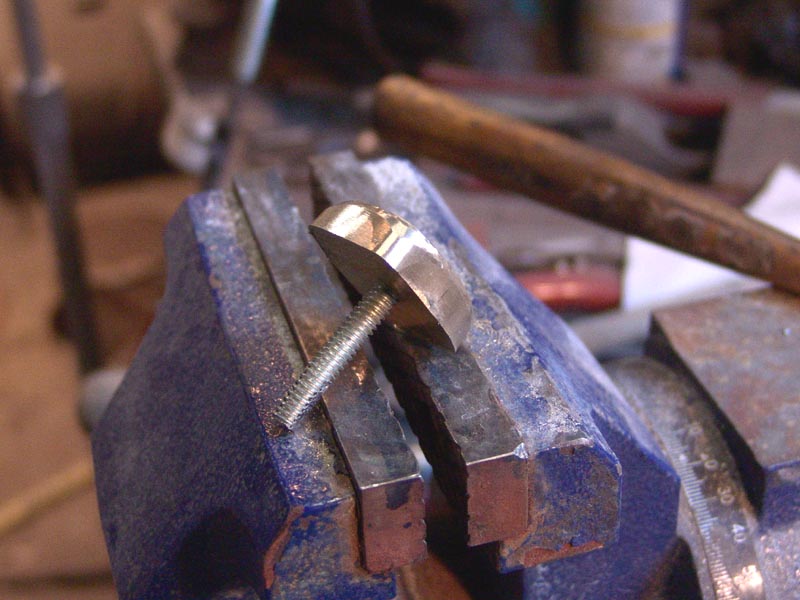
The antiquing process works better is the brass has some texture. I dimpled the piece with a small ball peen hammer.
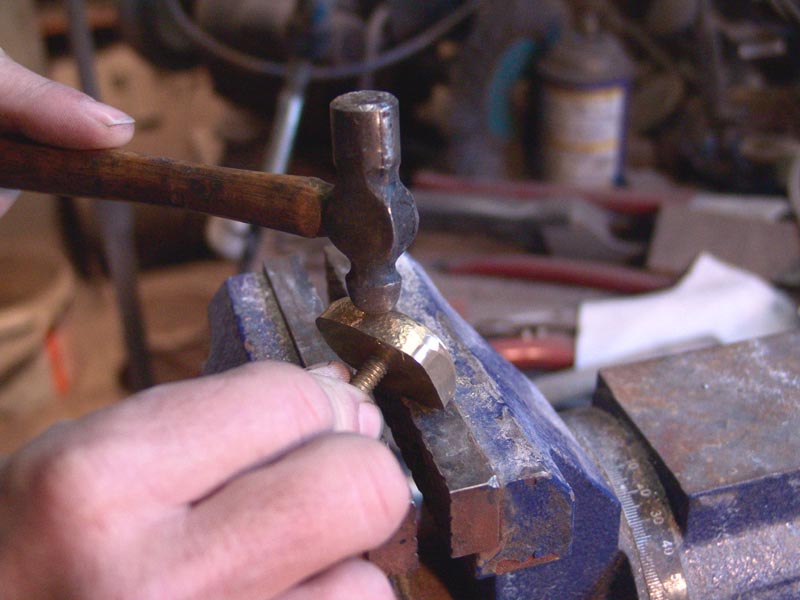
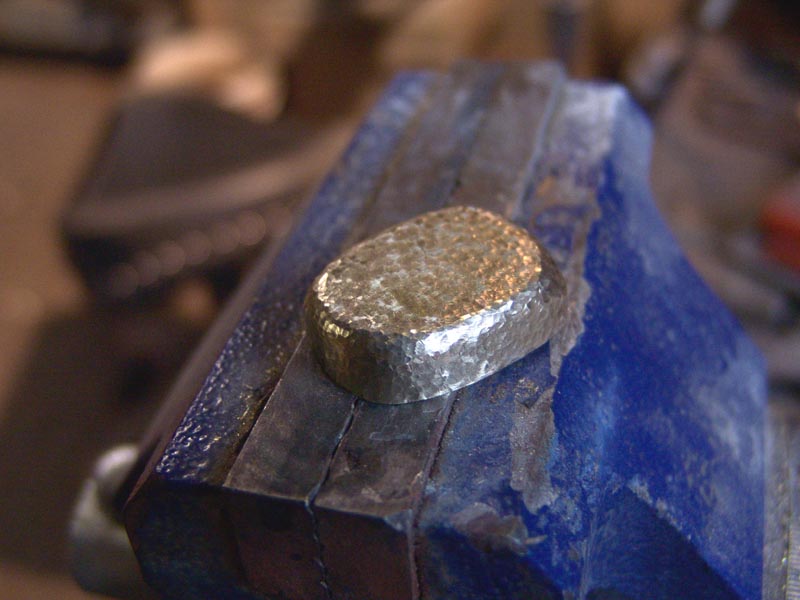
I made a lid for my ammonia container from a piece of plywood. I simply drilled a hole just large enough to pass trough a piece of wire. I then bent a loop in the wire and held the piece by threading a nut onto the stud.
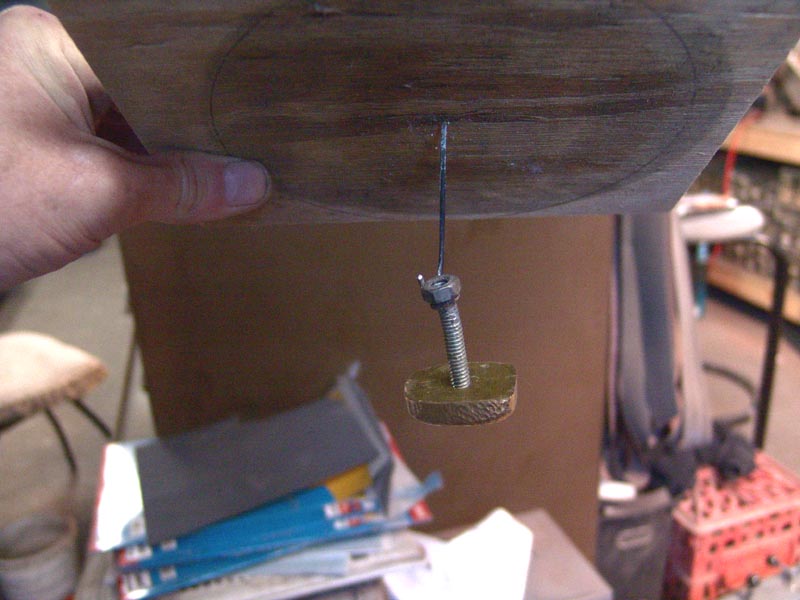
Pour about 1 cup of straight ammonia (available at any grocery store) into the container.
Warning: Follow the safety directions on the ammonia bottle and avoid breathing the fumes. Also be sure your container is relatively clean as ammonia can react violently with other chemicals.
I place the home-made lid with the brass piece attached onto the container. The idea is to suspend the brass OVER the ammonia and not to submerse it into the ammonia. This allows the vapors above the liquid to work on the brass.
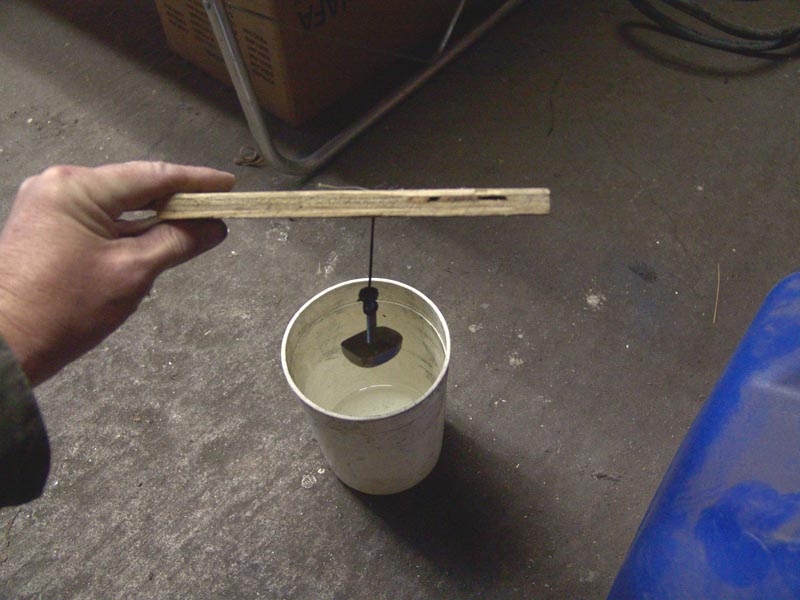
Leave it for 12-24 hours.
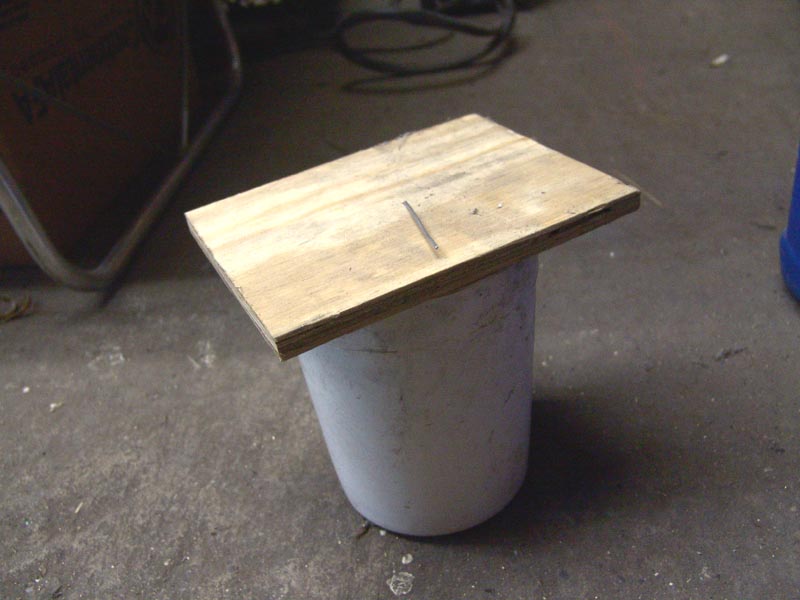
After 12-24 hours remove the piece. You will find that it is covered with a blue/green powdery residue. Rub the brass lightly with some steel wool to remove the residue. With a textured piece like this, brushing with steel wool will polish the high spots while leaving the low areas darker for a nice contrast.
Here, I have brushed the top with steel wool and the sides are untouched to show you the difference.
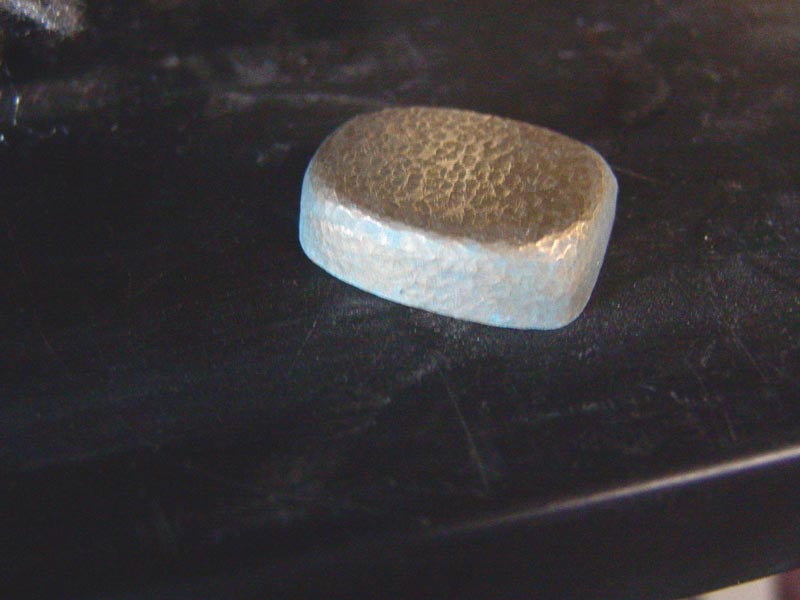
After brushing and attaching to my knife.
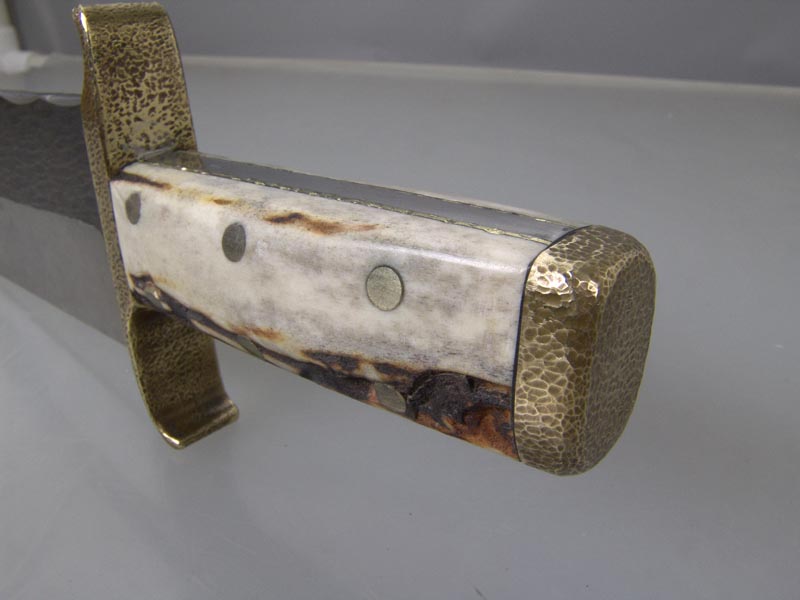
Here I have a brass butt cap already shaped and sized for the knife that will receive it.

The antiquing process works better is the brass has some texture. I dimpled the piece with a small ball peen hammer.


I made a lid for my ammonia container from a piece of plywood. I simply drilled a hole just large enough to pass trough a piece of wire. I then bent a loop in the wire and held the piece by threading a nut onto the stud.

Pour about 1 cup of straight ammonia (available at any grocery store) into the container.
Warning: Follow the safety directions on the ammonia bottle and avoid breathing the fumes. Also be sure your container is relatively clean as ammonia can react violently with other chemicals.
I place the home-made lid with the brass piece attached onto the container. The idea is to suspend the brass OVER the ammonia and not to submerse it into the ammonia. This allows the vapors above the liquid to work on the brass.

Leave it for 12-24 hours.

After 12-24 hours remove the piece. You will find that it is covered with a blue/green powdery residue. Rub the brass lightly with some steel wool to remove the residue. With a textured piece like this, brushing with steel wool will polish the high spots while leaving the low areas darker for a nice contrast.
Here, I have brushed the top with steel wool and the sides are untouched to show you the difference.

After brushing and attaching to my knife.

